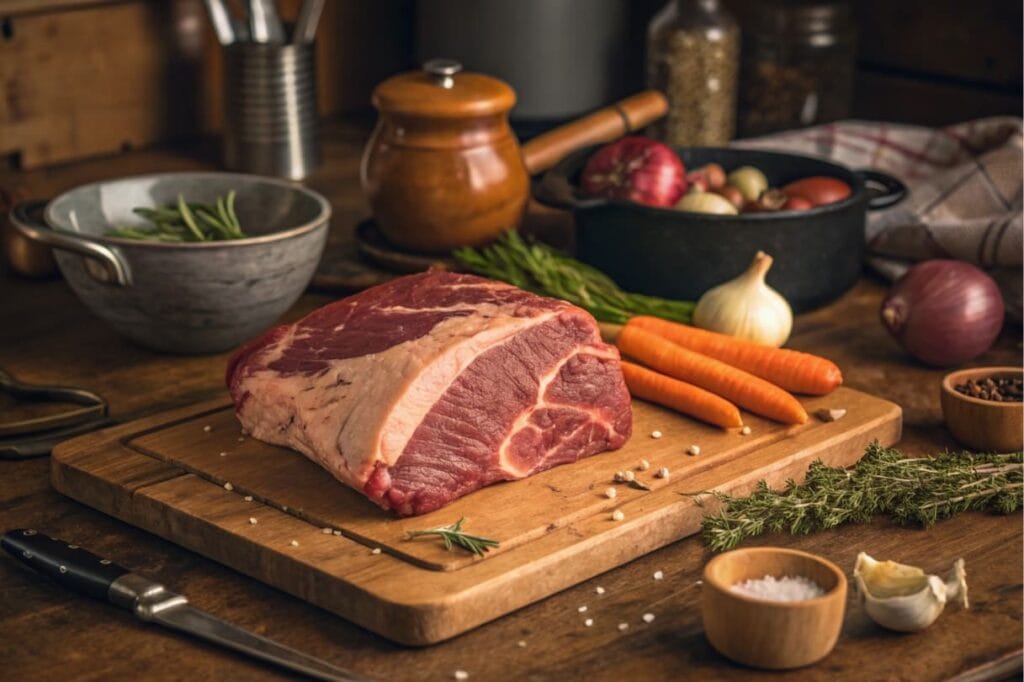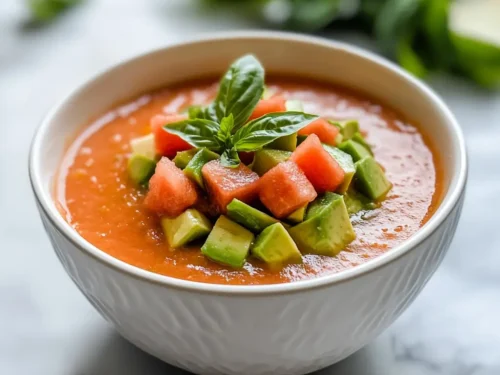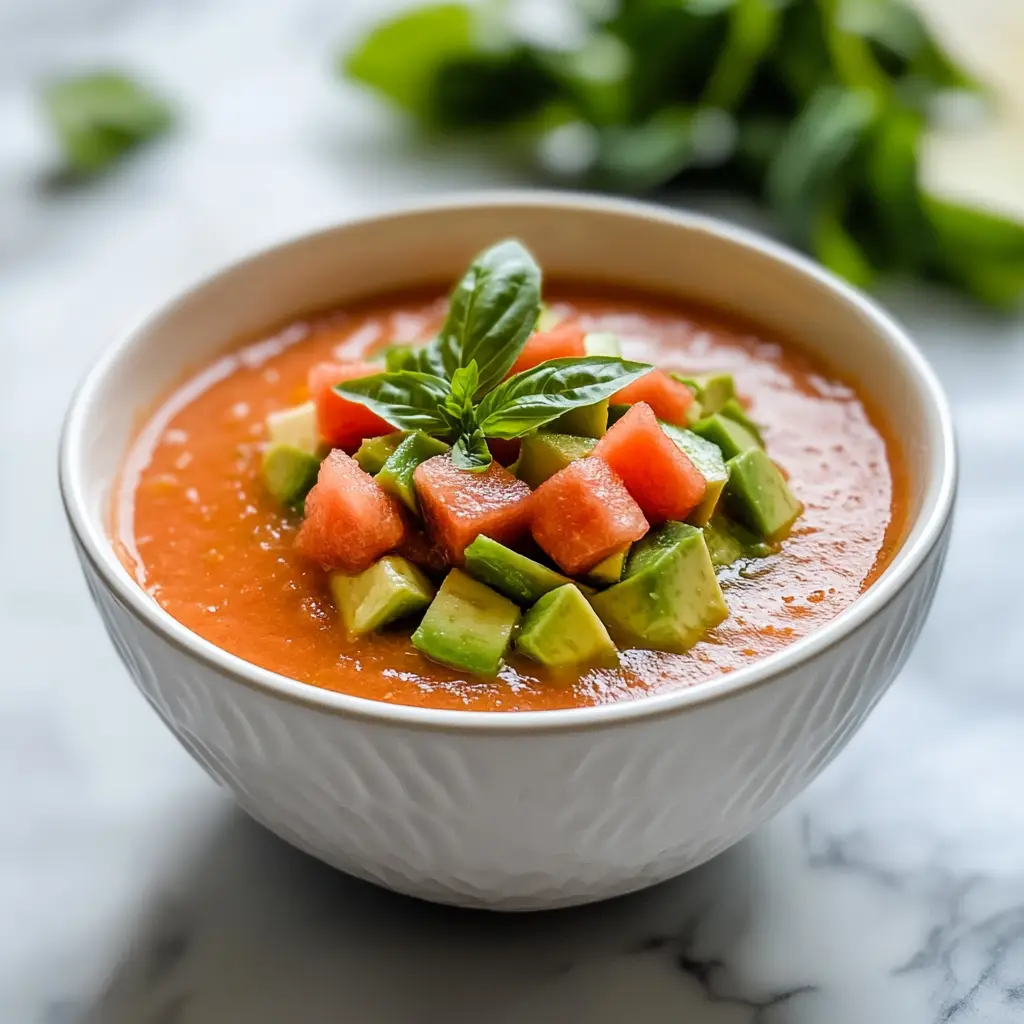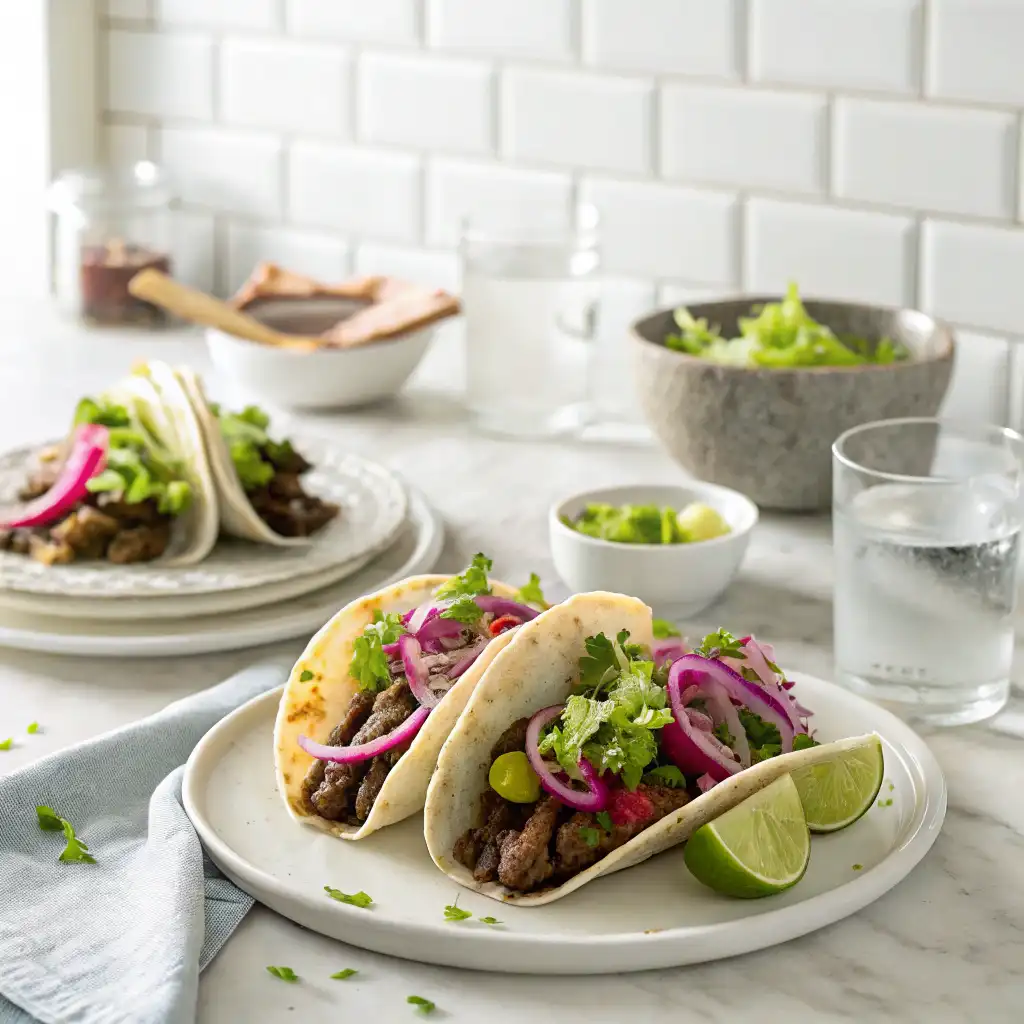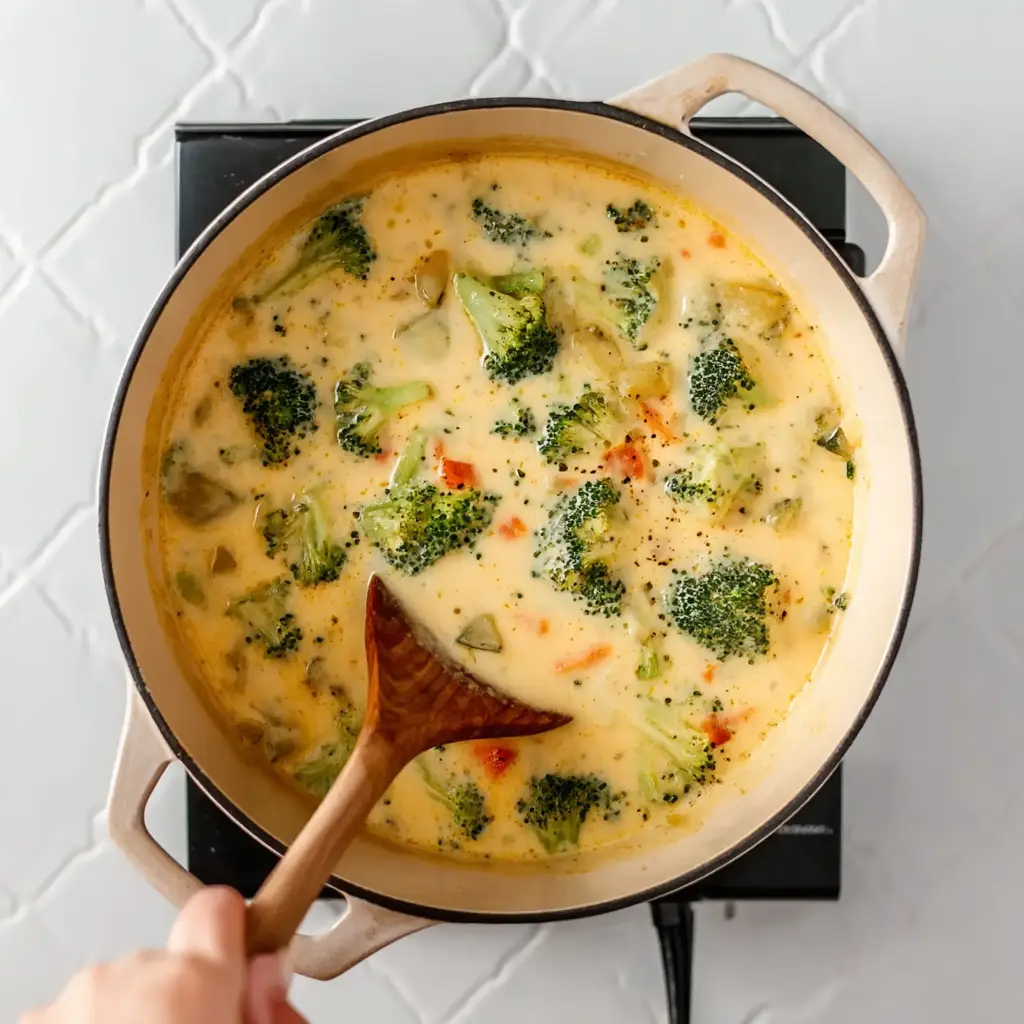Arm roast isn’t the flashiest cut at the butcher counter, but in our kitchen, it’s a quiet hero. It’s one of those cuts we stumbled upon by necessity, not design. Back when our daughter left for college and started calling with “how do I cook meat?” questions (right after asking for grocery money), Nora began jotting down simple, affordable recipes she could actually pull off. This roast made the list, and stayed there.
We’re Nora and Nicolas, the husband-and-wife team behind My Recipes Made, and we believe cooking should be simple, comforting, and real. No fancy ingredients. No pressure to be perfect. Just meals that warm the belly and the heart, even if dinner’s a little late and the kitchen’s a little messy.
In this guide, we’re sharing exactly why arm roast is one of our go-to cuts: it’s affordable, full of flavor, and surprisingly versatile. Whether you’re making a classic pot roast, slicing it into weekday steaks, or stretching it into leftovers for lunch, this cut has you covered.
From our kitchen to yours, let’s make something delicious. ❤️
Arm Roast Benefits: Flavor, Texture, and Versatility
Flavor, Texture, and Why It Deserves a Spot in Your Rotation
This lean cut from the cow’s shoulder is often overlooked, but it’s packed with potential. It tends to be firmer than fattier alternatives, yet it boasts a rich, beef-forward flavor that pairs beautifully with bold herbs and hearty vegetables.
Typically weighing between two and four pounds, it’s known for its tight muscle structure and a seam of connective tissue that softens beautifully with slow cooking. While it might not offer the marbled luxury of a ribeye, it’s perfect for recipes that shine with a little patience and a lot of seasoning.
Why It’s a Flavorful, Flexible Choice
What it lacks in fat, it makes up for in deep, satisfying taste. Braised, stewed, or slow-roasted, it absorbs sauces like a dream and holds its shape in everything from pot roasts to soups. It’s a great pick if you’re looking for something hearty but not overly heavy.
Best of all, it’s a cost-conscious cut that adapts easily to whatever you have on hand, making it ideal for real life, not just food blogs.
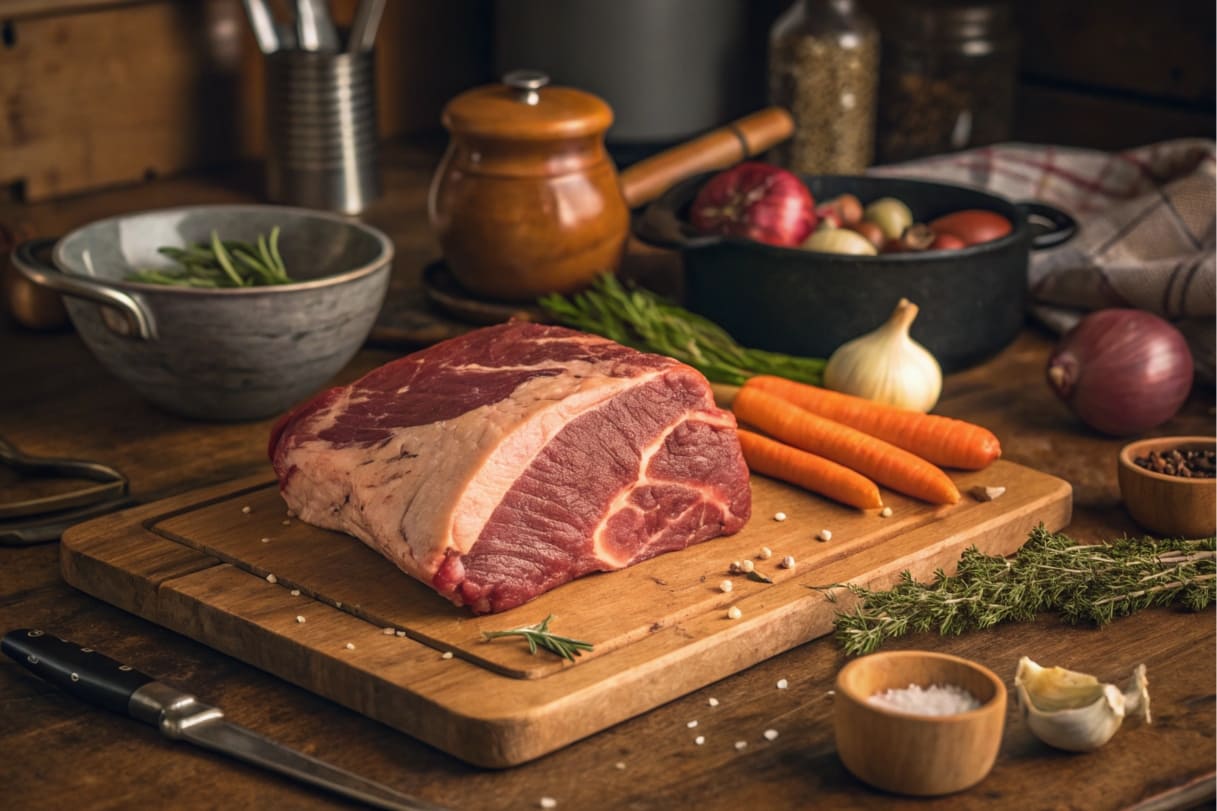
Arm Roast: Tips, Uses, and Meal Ideas
Equipment
- Slow Cooker
- Dutch Oven
- Sharp Knife
Ingredients
Main Ingredients
- 3 pounds arm roast
- 1 tbsp olive oil
- 1 cup beef broth
- 1 tbsp Worcestershire sauce
- 3 cloves garlic minced
Vegetables
- 3 carrots cut into chunks
- 4 potatoes quartered
- 1 onion sliced
Seasoning
- 1 tsp salt
- 1/2 tsp black pepper
- 1 tsp dried rosemary
Instructions
- Heat olive oil in a pan over medium heat. Sear the arm roast on all sides until browned.
- Place the roast in a slow cooker or Dutch oven. Add beef broth, Worcestershire sauce, and garlic.
- Add carrots, potatoes, and onions around the roast.
- Season with salt, pepper, and rosemary. Cover and cook on low for 6-8 hours or until the meat is tender and pulls apart easily.
- Remove the roast and vegetables, slice or shred meat, and serve with cooking juices.
Notes
Arm Roast Cooking Tips: Traditional and Modern Dishes
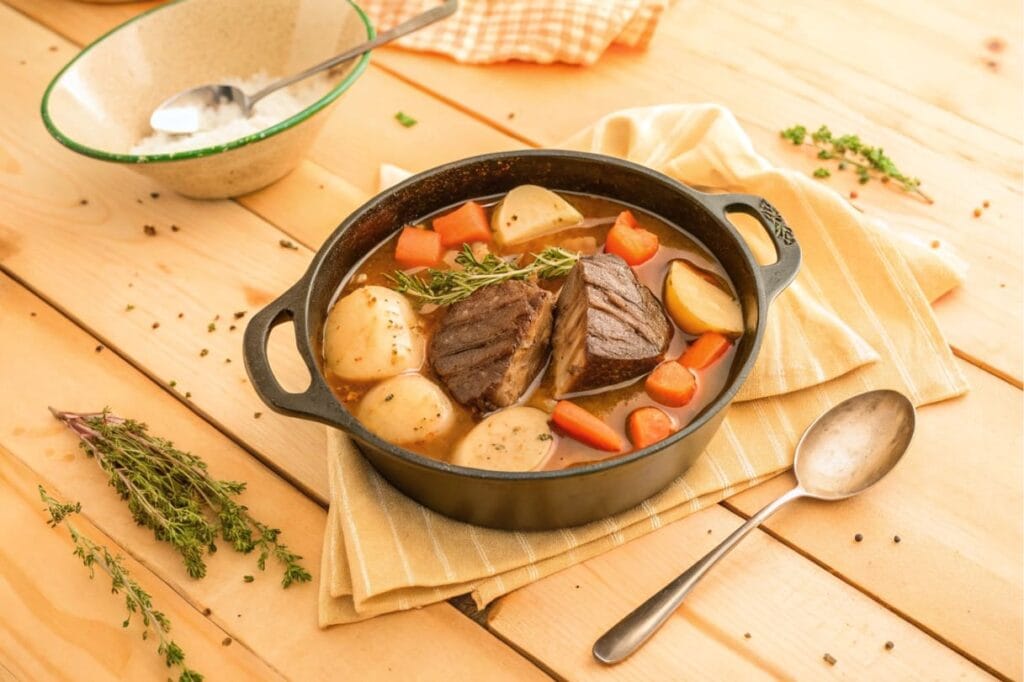
Traditional Preparations
The arm roast is a classic choice for traditional comfort food. Slow cooking in a Crockpot or oven is the most popular way to tenderize this otherwise tough cut. Pot roasts, often paired with vegetables like carrots and potatoes, are a go-to recipe for arm roast enthusiasts. Braising it in a flavorful broth not only enhances its taste but also ensures a melt-in-your-mouth texture.
Another traditional use is cubing the roast for hearty stews. The slow-cooking process breaks down the connective tissue, resulting in tender, flavorful chunks of meat perfect for winter meals.
Modern Takes and Creative Dishes
In today’s kitchens, the arm roast has found new roles beyond traditional recipes. Slicing it into thinner cuts, known as ranch steaks, is becoming more popular for quick weekday meals. Grilling or pan-searing these steaks, while keeping them medium-rare, can yield surprisingly tender results.
The arm roast can also be diced for use in soups or curries, where the surrounding ingredients add to its depth of flavor. For those who enjoy experimenting, marinating the meat in an acidic solution overnight can make it suitable for quicker cooking methods, such as stir-frying or kebabs.
Marinating and Tenderizing Techniques
Because of its lean nature, the arm roast benefits greatly from marinating. Using a mix of acidic ingredients like vinegar or citrus juice, combined with herbs and spices, helps tenderize the meat while infusing it with flavor.
For slow-cooking methods, adding a splash of wine or broth to the marinade can enhance the final dish. Another effective technique is using a meat tenderizer or simply scoring the surface of the roast to allow the flavors to penetrate deeper.
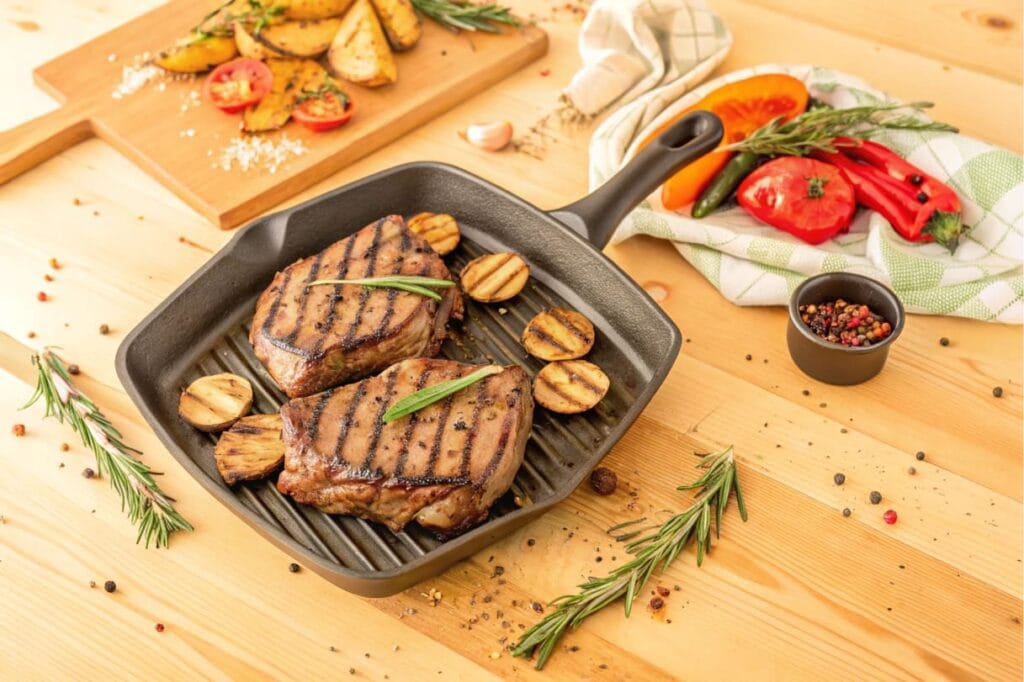
Internal Linking Opportunity
For readers looking to expand their culinary repertoire, exploring recipes like this arm roast recipe can provide inspiration for preparing this cut in new and exciting ways. Check it out to master your next arm roast recipes !
Lean Beef Arm Roast vs. Chuck Roast: Which is Better?
Arm Roast vs. Chuck Roast
When comparing the arm roast to the chuck roast, several differences stand out. The chuck roast, also from the shoulder region of the cow, tends to be fattier and more marbled, which enhances its tenderness and flavor during slow cooking. In contrast, the arm roast is leaner, making it a slightly healthier choice for those watching their fat intake.
That said, the arm roast often requires longer cooking times to achieve similar tenderness due to its lower fat content. While both cuts excel in pot roast recipes, the chuck roast might be the better choice for those craving a richer, juicier dish, whereas the arm roast is perfect for lighter, beef-forward meals.
Arm Roast vs. Round Roast
The round roast comes from the hind leg of the cow and is one of the leanest beef cuts available. While the arm roast also leans toward the less fatty side, it has a slight edge in flavor thanks to its placement in the shoulder region, which experiences more movement.
In terms of versatility, the arm roast wins again. Unlike the round roast, which is typically limited to roasts and deli-style slicing, the arm roast can be cubed for stews, sliced into ranch steaks, or cooked whole. Both cuts benefit from slow cooking, but the arm roast shines when you want a more robust beef taste.
Is an Arm Roast a good cut? If versatility and affordability are key factors, the answer is a resounding yes.
Budget-Friendly Beef Roast Cooking Tips
Best Cooking Methods for Arm Roast
Cooking an arm roast successfully hinges on one golden rule: low and slow. Slow cooking in a Crockpot or Dutch oven is ideal for breaking down the connective tissue, resulting in a tender, flavorful dish. Braising is another excellent method-adding liquid like beef broth or wine enhances the roast’s natural richness.
If you’re pressed for time, a pressure cooker can transform the arm roast into a melt-in-your-mouth meal in a fraction of the time. For a different spin, slicing it into ranch steaks for grilling or pan-searing can produce unexpectedly tender results if cooked to medium-rare.
Common Mistakes to Avoid
While the arm roast is forgiving in many ways, a few missteps can lead to disappointing results. Overcooking or cooking it at high heat can cause the meat to dry out. Instead, aim for a slow simmer or bake to allow the connective tissue to break down properly.
Another mistake is skipping the seasoning. Because of its lean nature, the arm roast thrives when paired with bold flavors like garlic, rosemary, and thyme. Don’t be afraid to get creative with marinades or spice rubs to bring out its full potential.
Additional Recipe Suggestions
For more tips on preparing beef cuts, check out How to Cook Perfect Beef Back Ribs for inspiration. While it’s a different cut, the slow-cooking techniques can be adapted to the arm roast.
Final Verdict :Is an Arm Roast a Good Cut for Your Kitchen?
Summary of Pros and Cons
So, is an arm roast a good cut? Absolutely, if you know how to use it. Its affordability and versatility make it a favorite for budget-conscious cooks. While it’s leaner and tougher than some other cuts, it can become tender and flavorful when cooked the right way. It also shines in dishes where bold seasonings and hearty vegetables take center stage.
That said, it may not suit everyone. If you prefer highly marbled, melt-in-your-mouth cuts like ribeye, the arm roast’s lean profile might not meet your expectations.
Why It Deserves a Spot in Your Kitchen
The arm roast deserves a place in your kitchen for its ability to adapt to various recipes and cooking methods. Whether you’re making a classic pot roast, slicing it into ranch steaks, or using it in a stew, this cut offers incredible value and flavor. Its robust, beefy taste pairs beautifully with hearty ingredients, making it a standout in slow-cooked meals.
If you’re seeking a lean, flavorful cut that doesn’t break the bank, the arm roast just might be the perfect choice for your next culinary adventure.
Budget-Friendly Beef Roast Recipes and Ideas
Budget-Friendly Beef Roast: Stretch Your Meals
For those who want hearty meals without spending a fortune, the arm roast is a true gem. It’s a versatile cut of beef that adapts beautifully to affordable, family-friendly dishes. By slow cooking the roast with inexpensive root vegetables like carrots and potatoes, you can create a complete and satisfying dinner. Leftovers from a roast can also be repurposed into shredded beef tacos, sandwiches, or even hearty soups.
For individuals who enjoy experimenting, try cubing the arm roast and using it in stews or chili recipes. The robust flavor of this cut allows it to hold its own in recipes rich with spices and seasonings. Plus, buying this cut in bulk can further stretch your grocery budget while still delivering delicious meals.
Arm Roast Cooking Tips: Save Money and Cook Delicious Meals
To make the most of your arm roast, consider seasoning and marinating it with pantry staples. Ingredients like vinegar, garlic, and dried herbs add depth of flavor without the need for costly sauces. Slow-cooking methods like braising or roasting in a Crockpot use minimal energy while ensuring the meat becomes tender and flavorful.
Is an Arm Roast a good cut for budget-friendly meals? Absolutely-it’s proof that you don’t need a premium cut to enjoy a premium dish.
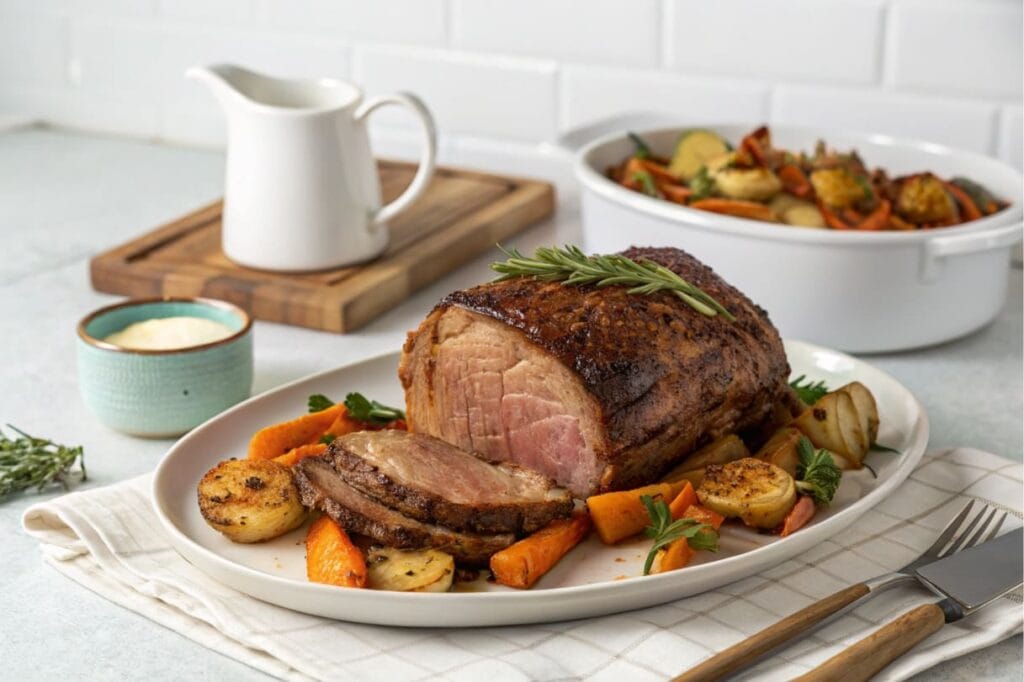
Conclusion : Your Next Steps with Arm Roast
Why You Should Try an Arm Roast
After exploring its versatility, affordability, and rich flavor, it’s easy to see why the arm roast is worth adding to your cooking repertoire. Whether you’re looking for a healthy beef option or a budget-friendly choice for family dinners, this cut ticks all the boxes. The keyword question remains: Is an Arm Roast a good cut? The answer depends on how it’s prepared, but for slow-cooking enthusiasts and creative cooks, it’s a resounding yes.
How to Get Started
Ready to put your new knowledge into action? Start by choosing a recipe that fits your lifestyle and taste. Whether it’s a classic pot roast or an adventurous stew, the arm roast is sure to deliver. Don’t forget to plan ahead for slow-cooking methods, as they truly bring out the best in this cut.
If you’re still exploring recipe options, consider browsing additional resources. For inspiration, you might find ideas on MyRecipesMade, where you can discover complementary dishes and cooking tips for beef cuts like the arm roast.
FAQs
Is an Arm Roast a Good Cut for Slow Cooking?
The best way to cook an arm roast is using slow and moist cooking methods. Slow cooking or braising helps tenderize this lean cut, transforming it into a flavorful and juicy dish. For example, using a Crockpot with beef broth, vegetables, and seasoning can create a savory pot roast that’s hard to beat.
Pressure cooking is another option for those short on time. By cooking it under pressure with liquid, you can achieve the same tenderness in a fraction of the time.
Arm Roast Cooking Tips: Can You Grill It?
Yes, you can grill an arm roast, but with a caveat-it requires special preparation. This cut’s lean nature means it can dry out quickly over high heat. Slicing it into thinner cuts, like ranch steaks, and marinating the pieces beforehand can help retain moisture and enhance flavor. Grill them quickly over medium-high heat and aim for medium-rare to preserve tenderness.
Arm Roast Benefits: Is It a Healthy Choice?
If you’re looking for a healthy beef option, the arm roast is a great choice. Its lean profile makes it lower in fat compared to cuts like the chuck roast or brisket. When paired with vegetables in recipes like stews or roasts, it creates a well-rounded, nutrient-rich meal. Plus, it’s versatile enough to fit into a variety of diets.
Why Does My Arm Roast Turn Out Tough?
The most common reason an arm roast turns out tough is insufficient cooking time or cooking it at too high a temperature. This cut contains connective tissue that needs slow, moist heat to break down properly. Always allow enough time for the roast to cook thoroughly, especially in methods like braising or slow cooking.


